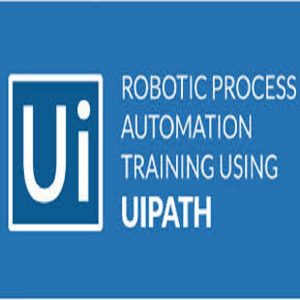Instructor-led Microsoft Azure AZ-104 live online classes
Date |
Duration |
Timings |
|---|---|---|
| SOLD OUT |
||
| May 23rd | FRI & SAT (5.5 Weeks) Weekend Batch | ⚡FILLING FAST Timings – 09:30 PM to 10:30 PM (EDT) |
Adda For Your Certification Needs
Get yourself enrolled in Microsoft Administrator: AZ-104 training by CertAdda and prepare yourself for the Microsoft Certified: Azure Administrator Associate certification by working on Azure services such as Storage, Virtual Machines, Cloud Services, Azure Active Directory, advanced Virtual Networking and Secure Identities through comprehensive hands-On.
$499.00 Original price was: $499.00.$449.00Current price is: $449.00.
Date |
Duration |
Timings |
|---|---|---|
| SOLD OUT |
||
| May 23rd | FRI & SAT (5.5 Weeks) Weekend Batch | ⚡FILLING FAST Timings – 09:30 PM to 10:30 PM (EDT) |
Learning Objective: In this module, you will learn about the administrative tools and components that make up an Azure subscription as well as the different available types of subscription. You will also learn about the various services provided by Azure. You will be introduced to Azure Resource Manager and how resources are organized into resource groups.
Topics:
Hands-On:
Learning Objective: In this module, you will be introduced to Azure virtual networking concepts and how do you create and configure them. You will also learn how system routes, routing tables, and routing algorithms are used. This module also introduces you to Azure DNS basics and Network Security Groups (NSGs). You will also learn how to implement NSGs considering service endpoints and policies.
Topics:
Hands-On:
Learning Objective: In this module, you will be introduced to Azure VMs, their supporting OS, sizing and pricing. You will also learn how to create and configure Windows and Linux VMs in Azure. This module also teaches you how to create custom VMs in Azure. You will also learn how VMs can be extended through custom scripts and Desired State Configuration.
Topics:
Hands-On:
Learning Objective: In this module, you will learn about storage accounts – Standard and Premium – as well as storage endpoints. You will also learn about data replication and work with Azure Storage Explorer to manage storage data. You will discover how a shared access signature (SAS) are used to provide delegated access to resources. You will also explore and understand disks and storage – Azure Blob Storage, Azure Files, and structured storage types like Table and Queue storage.
Topics:
Hands-On:
Learning Objective: In this module, you will learn how to use Azure backup as a data protection solution and work with Azure File Sync. This module also teaches you how to use Azure CDN and how to transfer data to and from cloud using Import/Export service and Data Box.
Topics:
Hands-On:
Learning Objective: In this module, you will learn about the two main configuration areas for VMs: Networking and Storage. You will learn how to keep your VMs highly available sets and how to use scale sets to increase/decrease the number of VMs. This module also covers backing up and restoring VMs.
Topics:
Hands-On:
Learning Objective: This module covers three ways in which traffic is distributed in a virtual network: Azure Load Balancer, Azure Traffic Manager and Azure Application Gateway. This module also deals with two specific types of inter-site connectivity: VNet-to-VNet connections and VNet Peering. You will learn when to choose which connectivity method, and how to implement and configure that method.
Topics:
Hands-On:
Learning Objective: In this module, you will learn how to integrate on-premises network with Azure Virtual Network. You will implement Point-to-Site VPN Connections and ExpressRoute to connect your virtual networks. You will also learn important skills around troubleshooting common network issues with the help of Azure Network Watcher tool.
Topics:
Hands-On:
Learning Objective: In this module, you will learn about Azure Monitor and its many capabilities to ensure your Azure architecture is working correctly. You will also learn about Log Analytics tool that provides a way for you to analyze and query all types of connected data. This module also focuses on the basics of Role-Based Access Control as it applies to users and groups.
Topics:
Hands-On:
Learning Objective: In this module, you will be introduced to the Azure Active Directory and the basics of implementing Azure AD objects. These objects include domains and tenants, users and groups, roles, and devices. In each lesson, you will practice how to configure these objects through the portal and with Azure PowerShell.
Topics:
Hands-On:
Learning Objective: In this module, you will learn how to integrate Active Directory with your existing infrastructure. You will learn about different authentication options such as Single Sign-on and Pass-through authentication. You will also learn how to configure Azure AD Application Proxy. This module also focuses on MFA and its working. Lastly, you will learn how to use conditional access policies.
Topics:
Hands-On:






